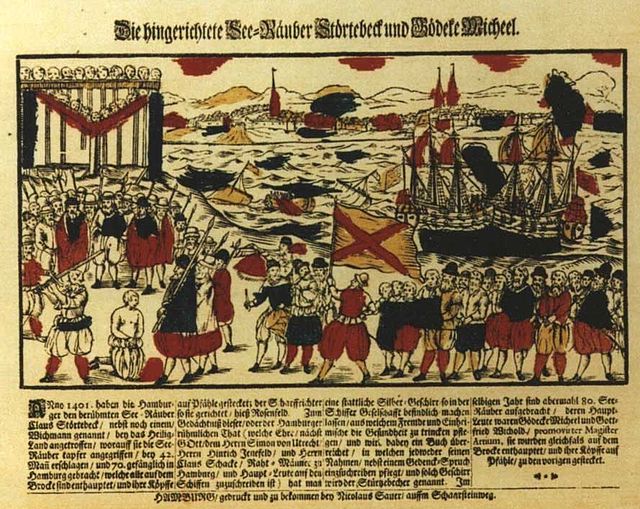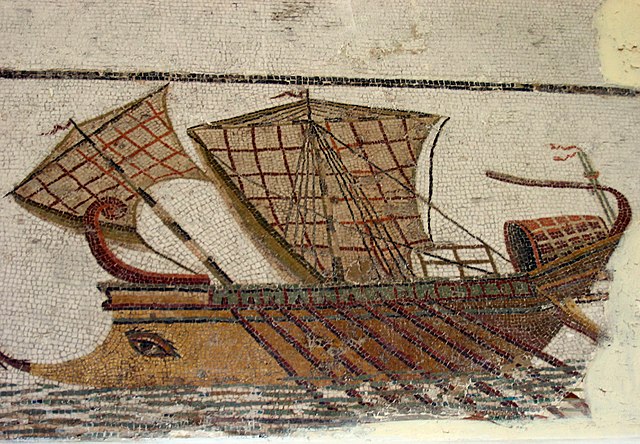The Victual Brothers, Vitalien Brothers or Vitalian Brethren were a loosely organized guild of 14th century Germanic privateers. They initially included Mecklenburg nobility, but later became an organisation of commoners, and later evolved into piracy. The guild had a clear historical effect in that era on maritime trade in the North and Baltic Seas. As privateers, they provisioned blockaded locations and otherwise served as a naval contingent on behalf of regional rulers, with clients that included the Queen of Denmark, and rulers of Mecklenburg and East Frisia. As their activities turned to piracy, the aims changed to personal enrichment.
A contemporary representation of the Vitalienbrüder on a wall painting, Bunge church, Gotland, Sweden, c. 1405
The summary execution of Störtebeker, 1401. Tinted woodcut by Nicolaus Sauer, Hamburg, 1701 (Hamburger Staatsarchiv)
Piracy is an act of robbery or criminal violence by ship or boat-borne attackers upon another ship or a coastal area, typically with the goal of stealing cargo and other valuable goods. Those who conduct acts of piracy are called pirates, and vessels used for piracy are called pirate ships. The earliest documented instances of piracy were in the 14th century BC, when the Sea Peoples, a group of ocean raiders, attacked the ships of the Aegean and Mediterranean civilisations. Narrow channels which funnel shipping into predictable routes have long created opportunities for piracy, as well as for privateering and commerce raiding.
A mosaic of a Roman trireme in Tunisia
A fleet of Vikings, painted mid-12th century
The Vitalienbrüder. Piracy became endemic in the Baltic sea in the Middle Ages because of the Victual Brothers.
"Cossacks of Azov fighting a Turk ship" by Grigory Gagarin





